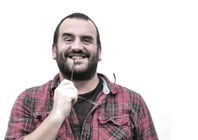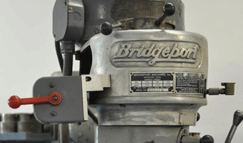As the 3D printing bandwagon rolls on,Al Dean wonders if the fascination with this particular method of production means new designers are missing a trick as altogether more interesting methods are left by the wayside
Let’s think about how the older among us got into engineering or design. I’m going to make a few sweeping generalisations, but they’re more archetype, than stereotype.
In our past, I’m seeing a lot of Lego or Meccano. I’m seeing playing outside with sticks, bit of old skateboards or roller boots. I’m then seeing a move towards the woodwork or metal shop at school.
The comprehensive I attended in Wolverhampton had a fantastic design and technology teacher called Bob Kite. Leather elbow patches, a quiet manner and an ability to make technical drawing interesting.
We all (apart from a few) came out of school with an appreciation of the fine art of drawing arrow heads correctly, what a french curve was for and how to sketch out a third angle projection (Americans still do this wrong but, I suppose, until they adopt metric, they’re doomed anyway).
But what we also got to do was play with equipment that would give head teachers a health and safety induced stroke these days.
Teenage kids learned how to operate a vertical mill and a lathe. We learned how to braze, how to make a sand mould for pouring molten aluminium in.
We burned ourselves, we cut ourselves and none of us managed to accomplish our unofficial fifth year project — to make a fake pound coin to get booty from the newly installed vending machines.
But my God, we had some fun and learned a thing or two. All presided over by Stan the Man. A technician, wearer of the filthiest overall you’ve ever seen and all round teacher of bad language to young gentlemen.
Kids don’t get to do that these days. They don’t get to do it at school and they don’t get to do it at college for the most part.
What I’ve also found is that the same is widespread in universities across the land. No workshop, no bandages, no runs to A&E because some muppet has torn a 3” gash in their finger with a pillar drill (I’ll put my hands up to that one, with a couple of stitches and a thumping headache).
So, it was with some delight that I got to visit a large, well known manufacturing organisation just a little off the M5 this week. I was there to have a chat about additive manufacturing in advance of a big project we have planned for next year. But what I found was a company that’s attempting to rectify many of these issues.
Rectify them not only with apprenticeships that see young people get on the tools and learn some skills, but also to allow the more formally educated members of their engineering and design team to get their hands dirty too.
The design and engineering department is encouraged to get into the prototyping lab, learn how to use the impressive array of tools available. Everything is there, from laser cutters and lathes, to 3 axis CNCs to titanium printing machines, from an Objet to a Bridgeport (these last two, six metres away from each other in the same room).
The staff take a course, then they’re allowed to experiment, to take their concepts and ideas and build the prototypes themselves. Materials are stocked, experts are on hand to help where needed and where able (they’re working on their own projects and workload alongside).
Nice — but what’s the ROI?
Conversations with the team in charge of this facility told me a thing or two about some of the benefits the company has derived. Firstly, prototypes are built much more quickly.
They already have a huge production machining staff, but the lead time for parts is weeks. By allowing the design and engineering team to do much of this work, they’re getting quicker results.
The company is also benefiting as its staff have a greater appreciation of what the manufacturing process is capable of, how to design for manufacture but also how to cut a few corners, when it comes to production. Not to the detriment of quality, but rather thinking smarter.
Where does 3D printing fit?
Perhaps my key takeaway from the visit was how the 3D printing machines (and this company has a lot) just fits in alongside the more traditional tools and processes. They’re not special, they’re used just as the wonderfully patined Bridgeport is. They’re just a tool.
Which leads me to my point — 3D printing and its rapid acceptance in many organisations is perhaps leading people to the conclusion that this is the way things are done.
The fact is that while it’s fantastic, it’s just another process, another method of production. If you just concentrate on one, then you miss all the others. I’d love to see the Gadget Show swooning over a 5 axis mill, I’d love to see Stephen Fry cooing over a swiss lathe churning our watch components in seconds.
But what I’d also love to see is a greater spread of manufacturing tools put back into schools, let kids see them, touch them and use them. Then perhaps we can stop the news talking about how manufacturing is dying and tell some more positive stories of success.
Come back Bob and Stan. We need you — more than we ever did. Sack the health and safety folks, teach us some real skills.

3D Printers aren’t special, they’re just another tool
Default







